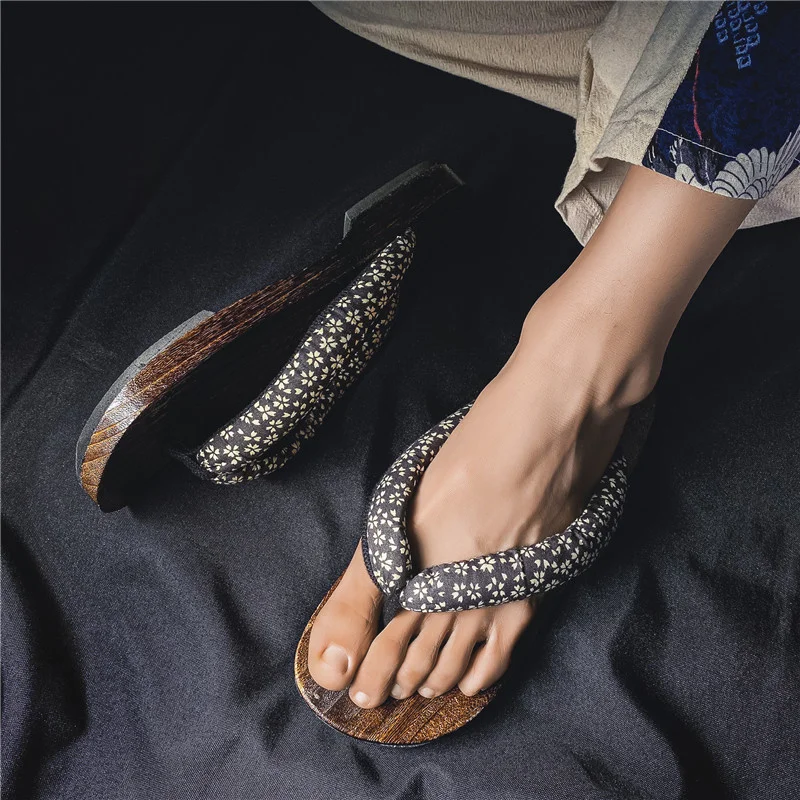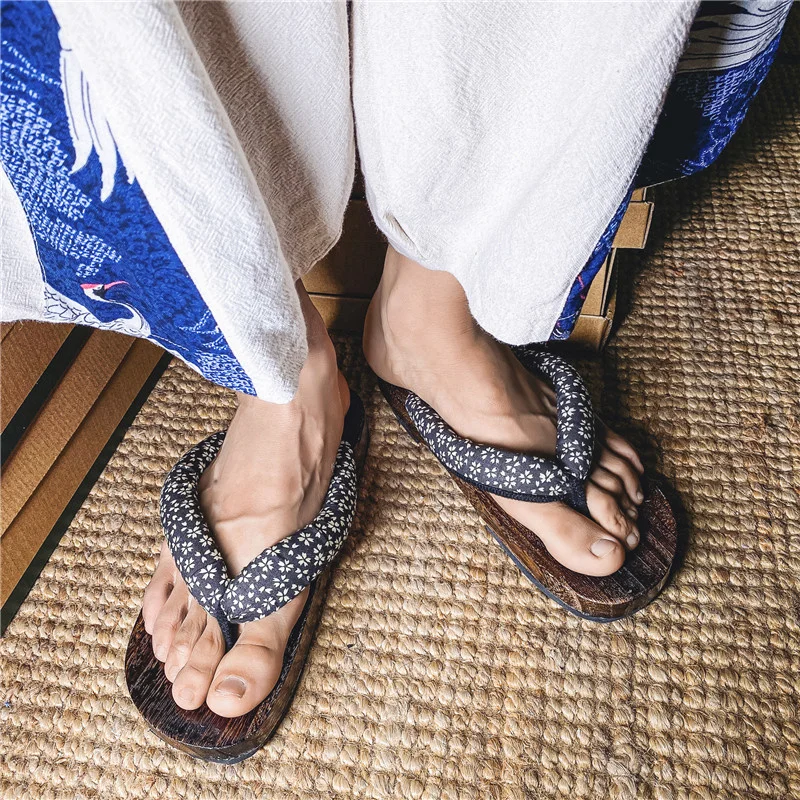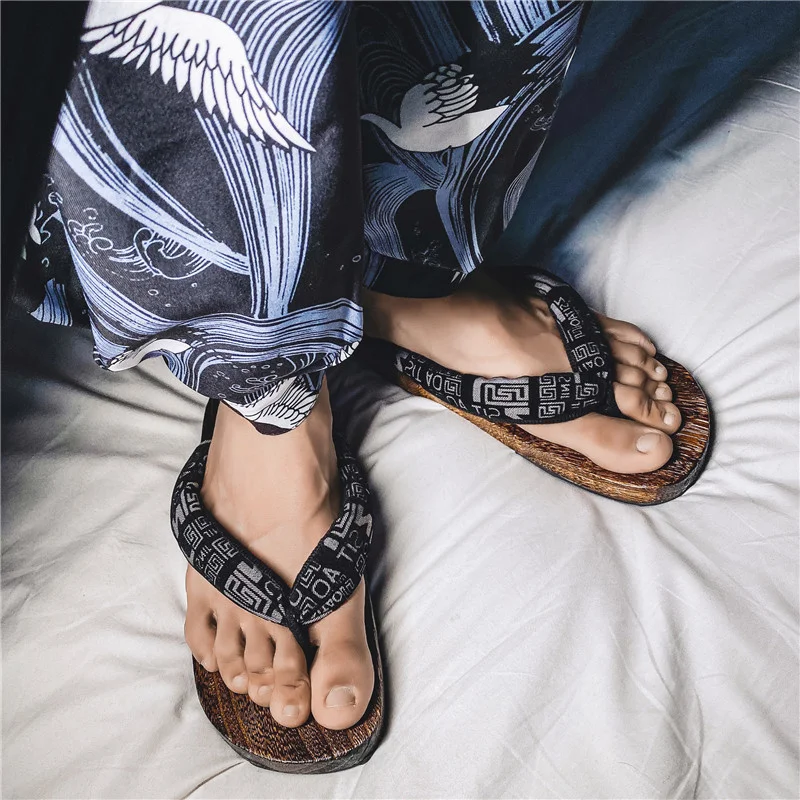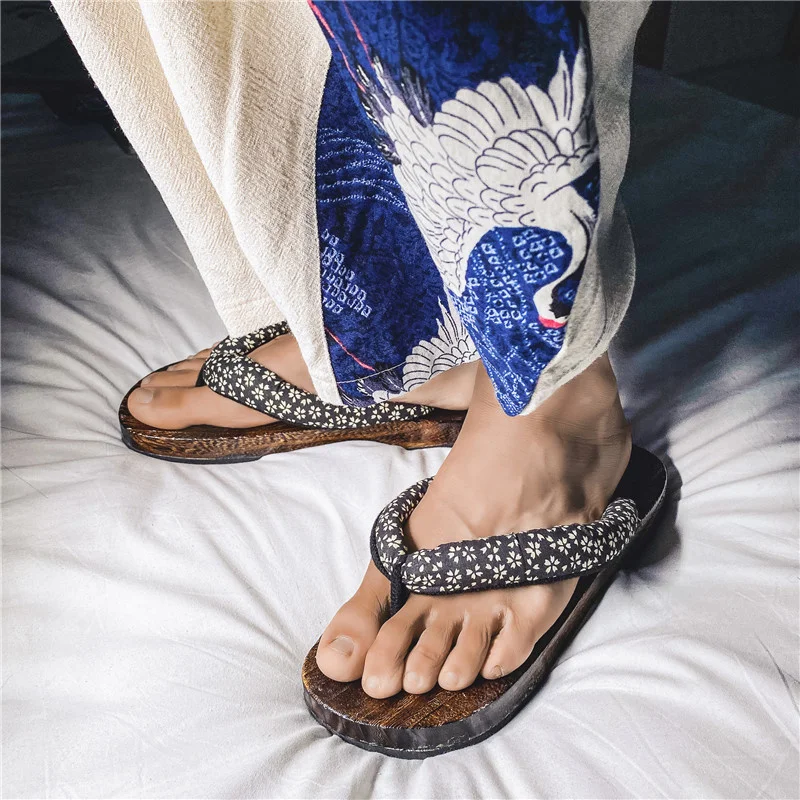Japanese slippers, known as “zori” and “geta,” carry rich cultural meaning and practical use. These traditional footwear items are more than just shoes; they represent a lifestyle centered around comfort and aesthetics. This article explores the various styles of Japanese slippers, their historical significance, and how they continue to influence fashion today.

The Historical Context of Japanese Slippers
Ancient Origins
The history of Japanese slippers can be traced back to ancient times. The traditional footwear in Japan was often made from materials easily found in nature, such as grasses, reeds, and wood. These materials were lightweight and possessed an innate flexibility, making them ideal for comfort. Early forms of slippers were simple and functional, and they reflected the minimalist nature of Japanese design.
Original footwear options included the geta and zori. The geta is a wooden sandal elevated by a pair of wooden blocks, enabling the wearers to navigate wet or muddy terrains effectively. Zori, on the other hand, have flat soles, typically made from rice straw or leather, and were often worn with more formal wear. These shoes laid the foundation for modern Japanese slippers, emphasizing comfort and practicality.
Evolution Through The Ages
As Japan transitioned through different periods, so did its footwear. The Edo period (1603-1868) was particularly significant for the development of slippers. This timeframe saw a rise in arts and crafts. Artisans began to pay more attention to aesthetics, leading to the creation of more stylish and varied options. The emergence of cotton and silk introduced new materials, enabling more intricate designs and embellishments.
By the Meiji era (1868-1912), Western influences began to permeate Japanese culture, including footwear. While traditional styles remained, new styles emerged, merging the best of both worlds. This period greatly impacted Japanese slippers, leading to the creation of modern adaptations suitable for everyday wear.
Throughout these transformations, comfort remained a priority. Traditional slippers were designed to suit indoor wear, aligning perfectly with the Japanese lifestyle, which often emphasizes the importance of comfort within the home environment.
Understanding Zori
The Design and Materials of Zori
Zori are flat sandals made from a variety of materials. They often feature a rice straw or tatami mat base. The use of rice straw makes them lightweight and breathable, perfect for warm weather. The upper part usually consists of fabric or leather straps that hold the slipper securely on the foot. In some designs, the straps are made of cotton or silk, adding a touch of elegance.
Many people wear zori in casual settings. They slip on easily and provide comfort for daily activities. Their simple design makes them versatile and suitable for various occasions. Whether lounging at home or attending a summer festival, zori adapt well to different environments.
Different regions in Japan have their unique styles of zori. Each style may have slight variations in design and color, reflecting local culture. Some might be more decorative, featuring intricate patterns or colors. Others may be more minimalist, focusing on functionality. This variety adds to the charm of zori and offers something for everyone.
The Cultural Significance of Zori
Zori have roots in Japan that date back centuries. Initially, they were worn by the aristocracy. Over time, they became popular among the general public. Today, zori symbolize traditional Japanese culture. Many people wear them when participating in festivals, ceremonies, or family gatherings.
In Japanese households, it is customary to remove outdoor shoes when entering. Instead, people wear zori indoors. This practice helps keep homes clean and reflects respect for the living space. Wearing zori signifies a transition from the outside world to the comfort of home. It fosters a sense of peace and relaxation.
Japanese culture also emphasizes mindfulness. Wearing zori is a part of this idea. The act of wearing a simple, comfortable shoe aligns with a lifestyle about appreciating the present moment. It highlights the importance of simplicity and functionality in everyday life.

Geta: A Unique Upper-Class Footwear
The Function and structure of Geta
Geta differ from zori. They feature an elevated wooden base with a thong strap. The elevation protects the feet from wet ground and mud. This design makes them practical for rainy days or walking through gardens. The wooden base also adds a unique aesthetic. Its height gives an air of elegance while remaining functional.
Geta come in various styles. Some feature a simple wooden platform, while others sport intricate designs or carvings. They can vary in height as well. Some people prefer shorter getas for everyday use, while others opt for taller ones for special occasions. This variety allows wearers to choose based on personal style and comfort.
The thong strap holds the foot in place. It can be made from cotton or silk, offering comfort and enhancing the overall look. This combination of function and style makes geta striking footwear that captures attention.
Geta in Modern Life
Geta have become popular not only for traditional occasions but also in modern fashion. Designers often incorporate elements of geta into contemporary footwear. This fusion creates a unique blend of tradition and modernity. People find this blend appealing. It offers a way to connect with heritage while enjoying modern comfort.
You can often see geta worn during traditional Japanese festivals, known as “matsuri.” Participants wear colorful kimono and often pair them with getas. This combination creates a striking visual effect. It highlights the importance of tradition while allowing personal expression.
Geta also appear in popular culture, such as anime and films. Characters in traditional settings often wear them. This portrayal contributes to their continued popularity among younger generations. Many young people are drawn to the charm of geta. They enjoy wearing them in casual settings or as part of cosplay outfits.
The Evolution of Japanese Slippers into Modern Fashion
The Global Influence of Japanese Slippers
The world is becoming increasingly interconnected. As a result, traditional Japanese slippers have made their mark internationally. Fashion designers and brands notice the unique aesthetic of zori and geta. They have begun to incorporate these elements into modern designs. This global interest helps keep the tradition alive.
Many fashion enthusiasts appreciate the comfort offered by these slippers. They notice the appeal of combining cultural heritage with contemporary style. Brands create collections inspired by Japanese culture while offering modern functionality. This approach allows heritage to thrive.
In international markets, Japanese slippers have gained popularity as casual footwear. They appeal to those seeking comfortable, stylish shoes for everyday wear. Many people pair them with both traditional and contemporary outfits. This adaptability showcases their versatility and ability to transcend cultural boundaries.
Japanese slippers are more than just footwear; they are a statement of identity. Wearing them reflects appreciation for craftsmanship and tradition. Many consumers seek products that tell a story. Japanese slippers tell the story of a rich cultural history, making them appealing to a global audience.
Sustainability and Ethical Fashion
Sustainability has become a focal point in fashion. Many consumers today prioritize brands that adopt ethical practices. Traditional Japanese slippers often emphasize handmade craftsmanship. This focus on quality ensures durability and minimizes waste. The materials used, such as rice straw or cotton, are often natural and biodegradable.
The rise of ethical fashion aligns with the use of zori and geta. Many artisans create these slippers locally. This practice supports local economies and preserves traditional skills. As a result, they contribute to a more sustainable fashion movement.
Wearing Japanese slippers also encourages a lifestyle of simplicity. The minimalist design resonates with those seeking to reduce clutter in their lives. By choosing quality over quantity, individuals embrace a more thoughtful approach to fashion. This shift encourages people to invest in items that endure over time.

Selecting the Right Japanese Slippers
Consider Your Needs
When choosing Japanese slippers, consider your primary use for them. If you want something comfortable for indoor use, zori or cozy slippers might suit your needs best. For outdoor events or casual wear, footwear such as geta or stylish sandals may be more appropriate.
Think about the materials as well, as some are better suited for specific environments. If you live in a rainy area, look for designs made from synthetic or water-resistant materials. If you are at home, consider softer fabric options that provide a cozy feel.
Embrace Your Style
Japanese slippers come in various styles, lengths, and colors. Choose slippers that reflect your personal style while balancing tradition and modernity. Don’t hesitate to explore vibrant patterns or unique designs.
If you are unsure about the aesthetics, neutral colors tend to pair well with any outfit. They add elegance to traditional Japanese clothing or casual modern attire. In contrast, eclectic patterns and brighter colors allow for self-expression and individuality.
Ensure Comfort and Fit
Comfort should be a priority when choosing any footwear, including Japanese slippers. Look for options that offer arch support and cushioning. Ideally, slippers should fit snugly without being too tight or loose, as this can lead to discomfort during wear.
Try slippers on if possible to assess their comfort. Walk around in them to evaluate the fit and overall feel. If you are purchasing online, refer to sizing guides and customer reviews to ensure you select the right size.
The Craftsmanship Behind Japanese Slippers
Artisanal Techniques in Creating Japanese Slippers
The making of Japanese slippers is an art form. Skilled artisans dedicate their lives to mastering this craft. The process involves selecting quality materials, cutting them precisely, and assembling the pieces carefully. Each step requires attention to detail and years of experience.
Artisans use traditional techniques passed down through generations. They often rely on methods that prioritize handwork over machinery. This dedication to craftsmanship ensures each pair of slippers possesses a unique character. No two pairs are ever identical, adding to their charm.
As the demand for these slippers grows, artisans adapt their techniques while preserving traditional values. Some blend old methods with modern technology. This innovation helps reach a broader audience while maintaining authenticity.
Learning from Tradition
Artisans often share their knowledge with younger generations. This passing down of techniques ensures that traditional craftsmanship is not forgotten. Workshops and classes help foster interest among young people. Many aspire to create their own versions of zori and geta.
The appreciation for traditional craftsmanship is also evident outside Japan. International artisans often seek to learn these techniques. This exchange of knowledge enriches the craft and helps keep it alive. The result is a growing network of people dedicated to preserving the art.
Moreover, artisans take pride in their work. A deep respect for the materials used is evident in every pair crafted. They appreciate the natural beauty of rice straw and cotton. This connection to nature fosters a sense of responsibility toward sustainability and the environment.
Wearing Japanese Slippers: Tips and Occasions
Best Occasions for Wearing Zori and Geta
Japanese slippers stand out for their versatility. You can wear zori for casual gatherings, home lounging, or outdoor festivals. Their comfort makes them a go-to choice for relaxed settings. When combined with summer attire, they create a delightful look for beach outings or picnics.
Geta shine during traditional events like tea ceremonies or cultural festivals. Their elegant appearance and height bring a sense of occasion to any outfit. Pair them with a kimono, and you embody the essence of traditional Japanese beauty.
It’s also popular to wear zori while traveling. Many choose them for day trips due to their lightweight design. They are easy to pack and slip on when sightseeing. Another common use is as house slippers. They contribute to a cozy, traditional atmosphere at home.
Caring for Your Japanese Slippers
Maintaining your zori and geta ensures their longevity. Start by cleaning them regularly. Remove dirt and debris with a soft brush. For wooden geta, a damp cloth can help wipe down the surface. Avoid soaking them in water, as this may cause damage.
Storage is also crucial. Keep slippers in a dry place away from direct sunlight. Prolonged exposure to sunlight can lead to color fading. If you own multiple pairs, consider using a shoe rack. This practice helps avoid unnecessary wear and keeps everything organized.
When it comes to caring for the materials, opt for gentle cleaning agents. Harsh chemicals might compromise the fabric or wood. For fabric straps, a mild detergent and cold water can help maintain color and softness.
The Role of Slippers in Japanese Homes
One of the most important spaces where Japanese slippers are worn is inside the home. In Japan, the practice of removing shoes when entering a home is not just a matter of hygiene but also a cultural norm. The act of stepping out of outdoor shoes and into indoor slippers marks a symbolic transition from the outside world to the personal space of the home. This ritual is viewed as an act of respect for the home and its inhabitants, as well as a way to preserve cleanliness.
The genkan serves as the entryway to a house, where people are expected to remove their outdoor shoes and replace them with slippers. This practice is also a way to keep the home’s interior free of dirt and dust. Slippers are often kept in the genkan for easy access, and guests are usually offered a pair of slippers upon arrival. The emphasis on cleanliness and respect for the home is part of a broader Japanese cultural value system that prioritizes order and harmony in the home environment.
The use of slippers in Japanese homes is not limited to the entryway. Many homes have specific slippers for different areas of the house, such as the bathroom or bedroom. Bathroom slippers, for example, are often made from rubber or plastic to prevent the spread of moisture. These slippers are typically worn only in the bathroom and are not to be worn in other areas of the home. This segregation of slippers based on location reflects the Japanese value of cleanliness and order in every part of the home.
Slippers in Japanese Workplaces and Public Spaces
While slippers are most commonly associated with the home, they also play a significant role in Japanese workplaces and public spaces. The tradition of wearing slippers in specific areas of the workplace or public institutions is reflective of the same cultural values of cleanliness and respect.
In many Japanese offices, employees are expected to remove their outdoor shoes and replace them with indoor slippers upon entering the workplace. These slippers are typically provided by the company or organization and are kept in designated areas near the entrance. The practice of wearing slippers at work ensures that the office space remains clean and free of dirt, just as it does in the home.
Schools in Japan also follow the tradition of wearing slippers. Students are often required to wear slippers inside the school building, particularly in hallways and classrooms. This practice helps maintain cleanliness in the school environment, which is especially important given the high volume of foot traffic in public spaces. Slippers are usually worn in the indoor areas of the school, while outdoor shoes are worn only in designated areas.
Public institutions, such as hospitals, temples, and some public offices, also follow the practice of wearing slippers. In hospitals, for example, slippers are worn by patients, visitors, and staff alike to maintain hygiene and prevent the spread of dirt or germs. Visitors to temples or traditional cultural sites are often provided with slippers to wear during their visit, as a way to show respect for the sacred space.
The widespread use of slippers in public spaces also reflects Japan’s commitment to maintaining a high standard of hygiene. Whether in the workplace, school, or public institution, slippers serve as a practical tool for promoting cleanliness and order.
Modern Innovations and Trends in Japanese Slippers
While traditional slippers like geta and zōri remain popular in Japan, modern trends have also influenced the design of slippers. In recent years, Japanese slippers have evolved to reflect changing tastes and technological innovations, with new materials, colors, and designs being introduced into the market.
One of the most significant changes in the design of modern slippers is the shift toward comfort and functionality. Today’s slippers are often made from soft, breathable materials such as memory foam, cotton, and synthetic fabrics. These materials provide superior comfort, making them suitable for long periods of use. The rise of ergonomic slippers that support the arch of the foot has also contributed to the growing trend of wearing slippers for relaxation and comfort at home.
Another trend in modern Japanese slippers is the focus on eco-friendly materials. With a growing awareness of environmental issues, many Japanese manufacturers have turned to sustainable materials like bamboo, organic cotton, and recycled plastics to create their slippers. These eco-friendly slippers appeal to consumers who are conscious of their environmental impact and prefer products that align with their values.
Design-wise, modern Japanese slippers come in a wide variety of styles, ranging from minimalist and sleek to colorful and playful. Some slippers feature innovative designs, such as slip-on styles with memory foam insoles, adjustable straps, and antibacterial fabrics. These slippers combine practicality with aesthetics, catering to the demands of contemporary Japanese consumers who prioritize both comfort and style.
The trend of indoor slippers has also expanded beyond the home. Today, many people wear slippers in places like cafes, libraries, and even offices, where comfort and relaxation are prioritized. The modern approach to slippers in Japan reflects a shift toward creating environments where individuals can feel at ease and relaxed, whether at home, work, or public spaces.
Final Thoughts: The Enduring Allure of Japanese Slippers
A Celebration of Heritage and Comfort
Japanese slippers embody a beautiful blend of tradition and modernity. They represent a lifestyle that values comfort, mindfulness, and aesthetic simplicity. Their influence continues to grow in various cultures around the world.
Through zori and geta, people experience a connection to Japanese heritage. Wearing them fosters a sense of belonging and appreciation for craftsmanship. The act of choosing traditional footwear becomes a small but meaningful gesture of respect for culture.
In conclusion, Japanese slippers are more than just footwear. They symbolize comfort and serve as a reminder of the importance of heritage. Wearing them invites individuals to experience a rich history and embrace beauty in simplicity. As we continue to cherish these unique slippers, we also honor the traditions and artisans behind them.
